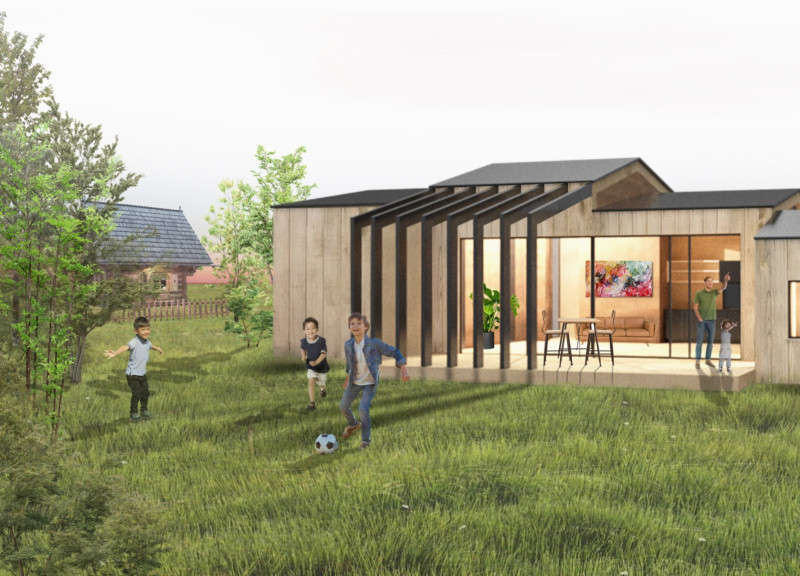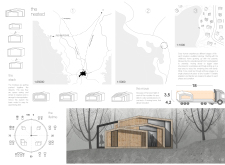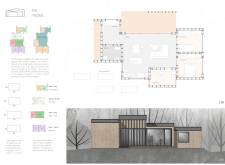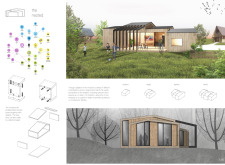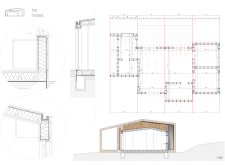5 key facts about this project
The design focuses on a modular living solution that caters to various lifestyles. The project is set in an adaptable urban environment, emphasizing flexibility for residents. With a design concept centered on stackable modules, it optimizes space use while making transportation and assembly straightforward. This approach serves households that may require different living arrangements as their needs change over time.
Modular Configuration
The system allows for easy assembly of modules, which can be transported together on a single truck. The reduced height of each module supports this mobility, making it practical for relocating homes. This approach addresses the demands of modern living, where residents often seek homes that can change with them throughout their lives.
Spatial Organization
The internal layout separates spaces into public and private areas, keeping a ratio of 60/40. Central to the design is a spacious living and dining area that opens up to a terrace, strengthening the connection between indoor and outdoor spaces. This arrangement promotes social interaction, while the two bedrooms situated at the back provide a quiet retreat for rest.
Versatile Floorplan
The overall floorplan includes a total ground area of 90 square meters, resulting in an effective living space of 81 square meters. Each modular unit fits together with dimensions ranging from 5.5 meters by 3.5 meters to 7 meters by 3.5 meters. This modularity allows for varied configurations, enabling residents to combine units into distinct room types that suit their specific needs, whether for a single person or a family.
Adaptability and Sustainability
Prefabricated modules are joined using spigots, allowing for easy assembly and disassembly. This method enhances the portability of the units, making it simple to reconfigure living spaces as needed. Such a construction approach reflects a commitment to sustainability, ensuring that the design remains relevant and functional over time.
In the end, the project presents a thoughtful living concept where flexibility supports modern urban life, merging practical design with a focus on community and individual needs.


